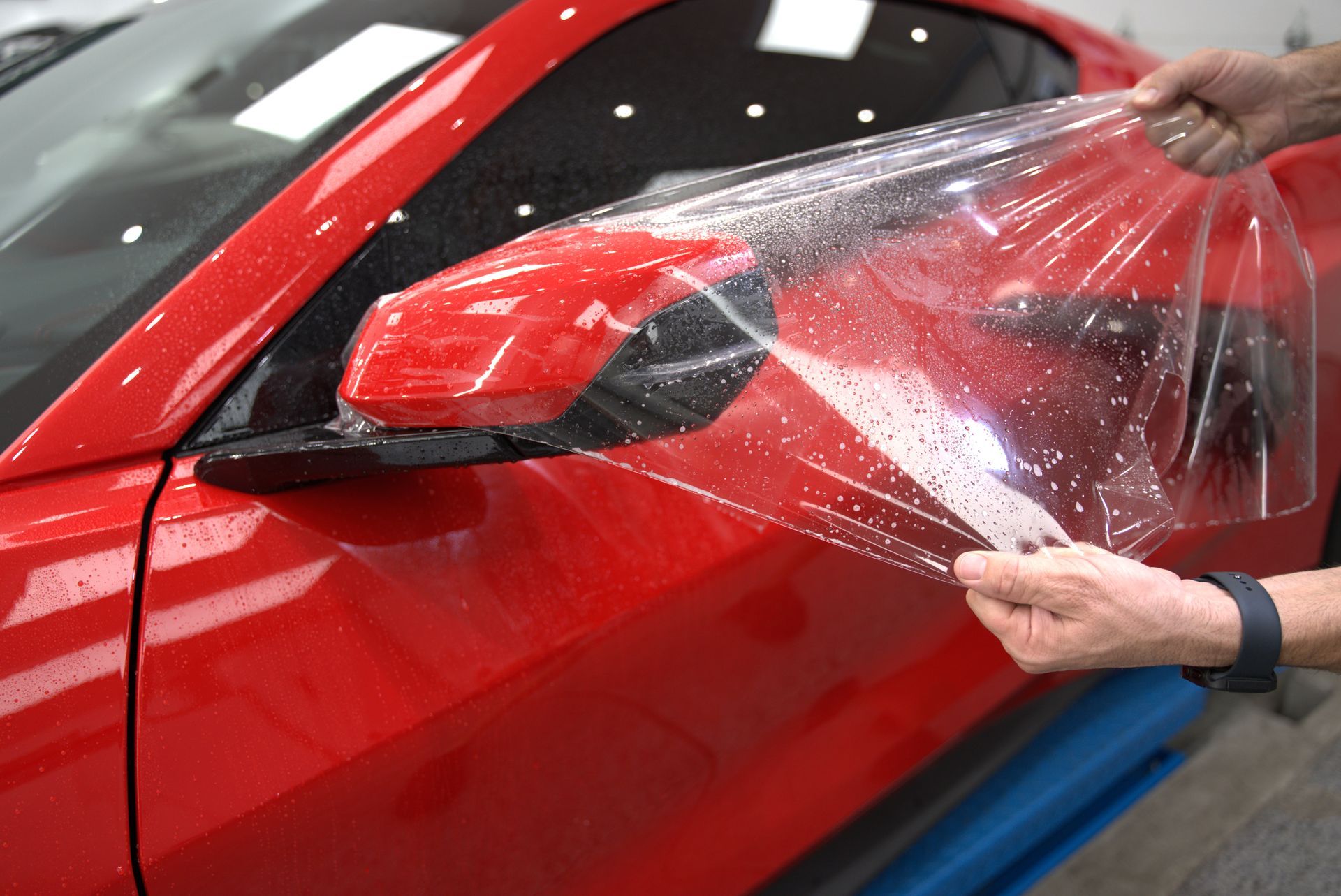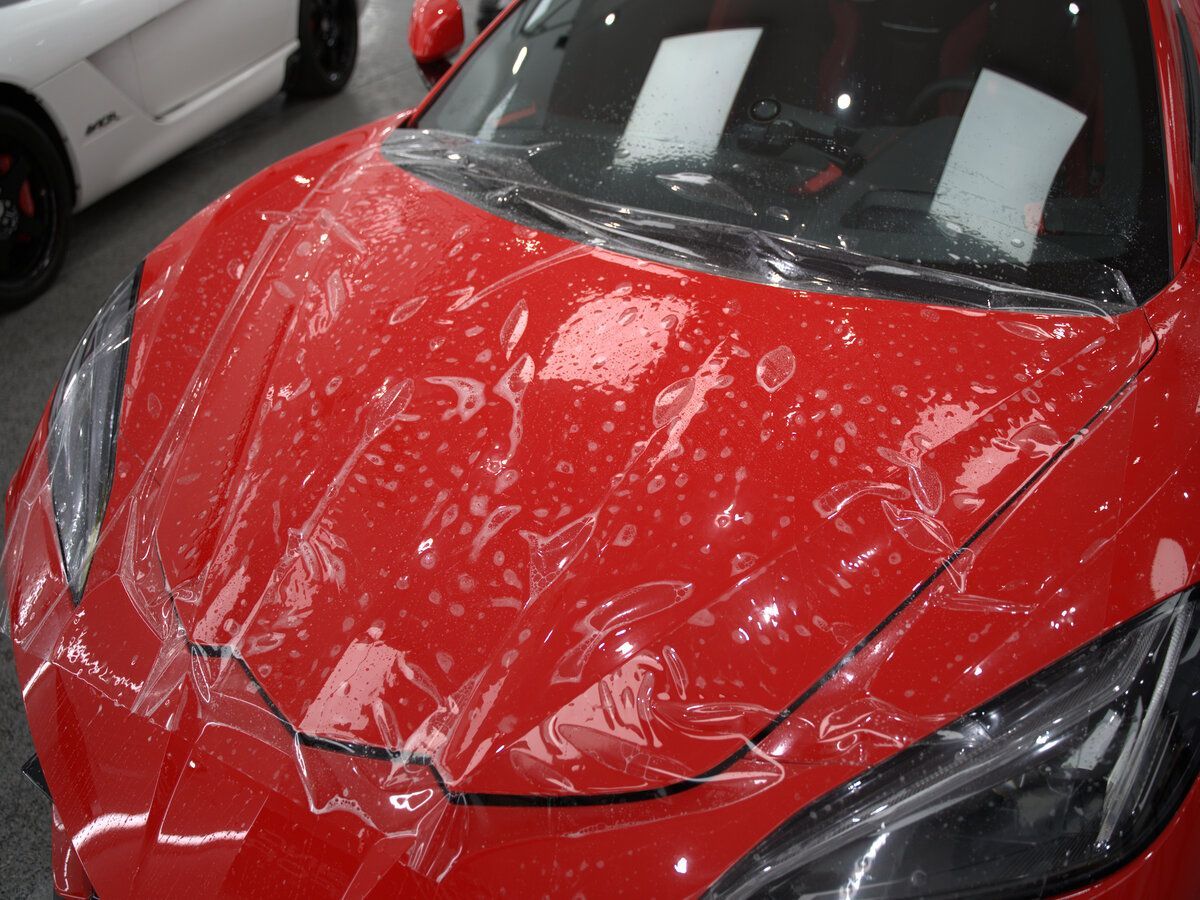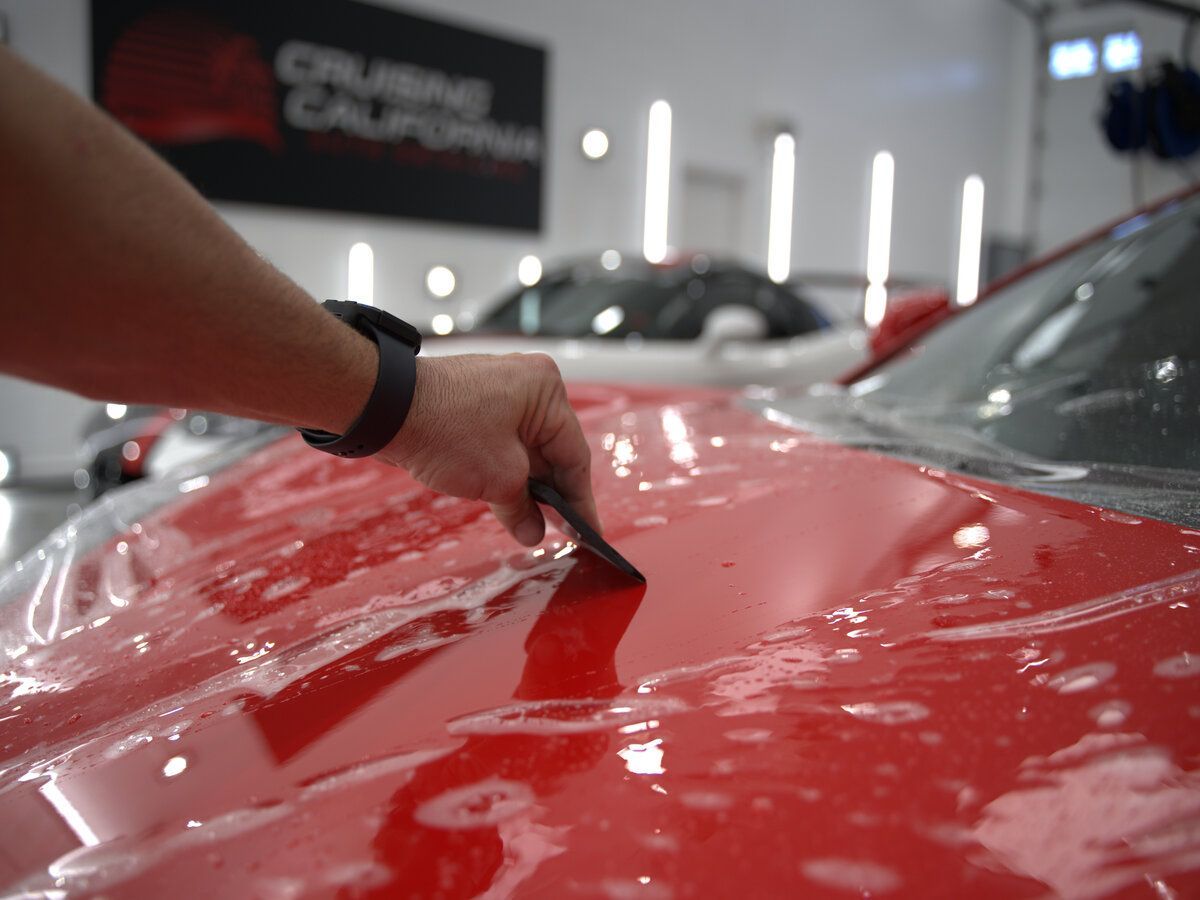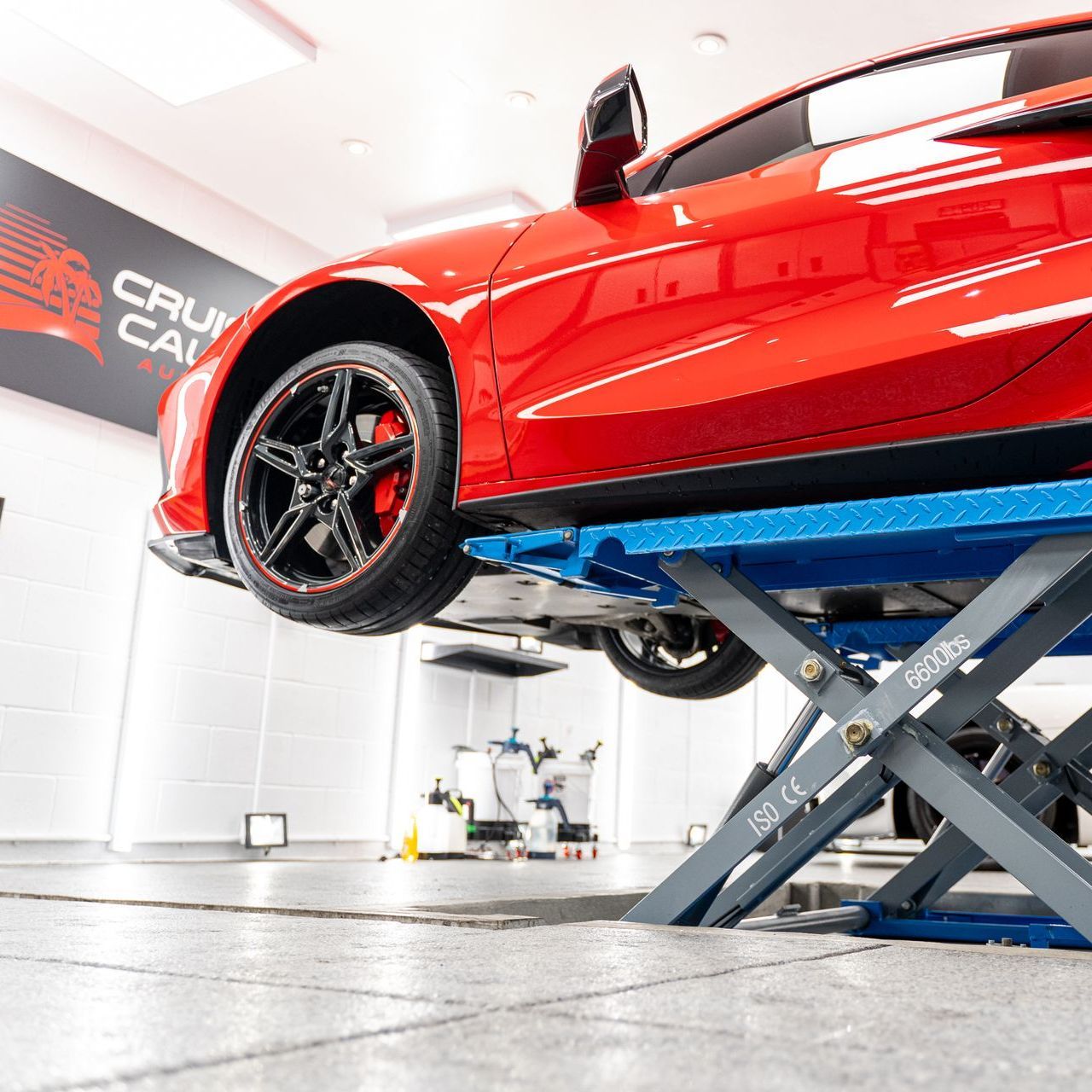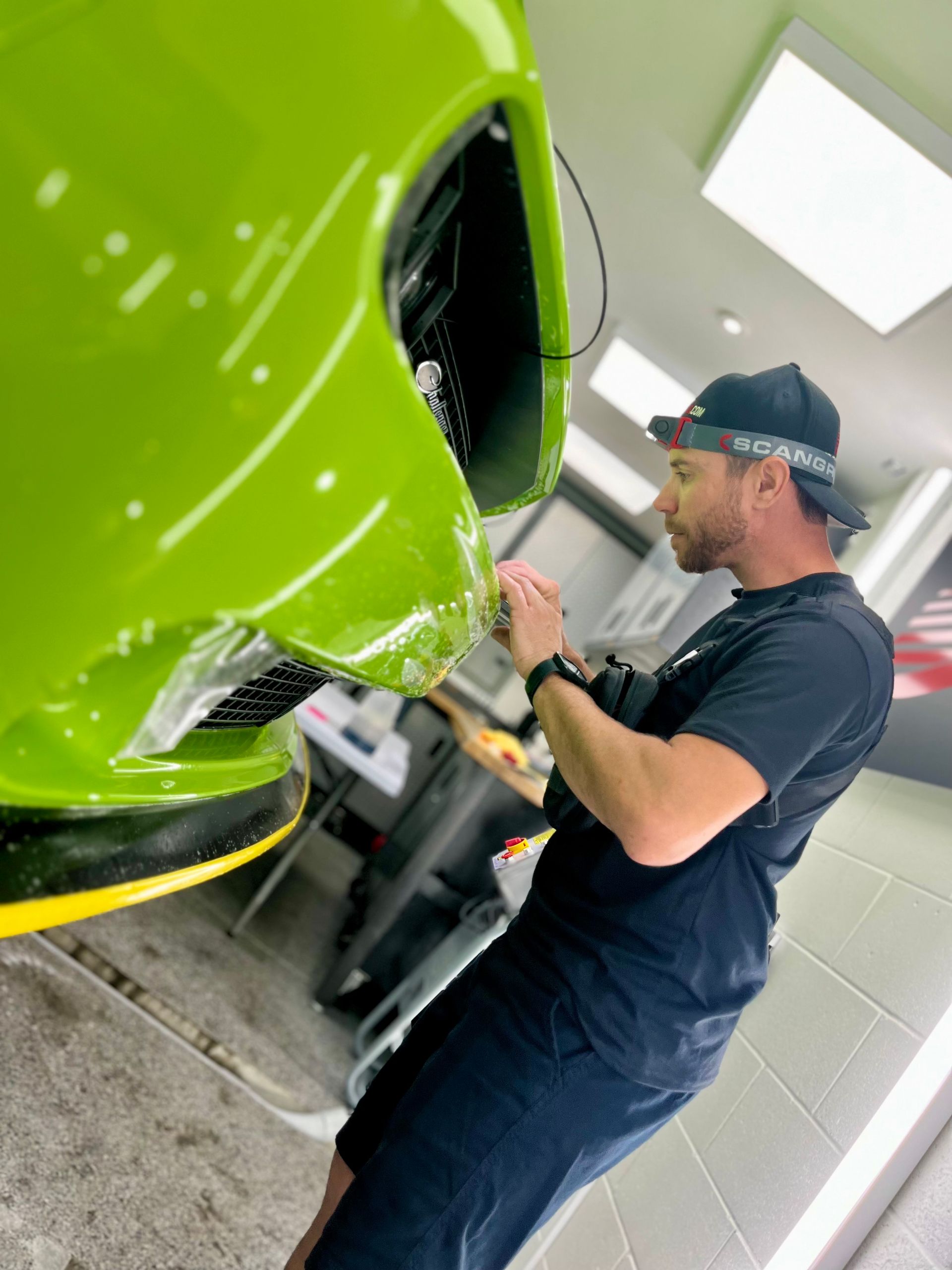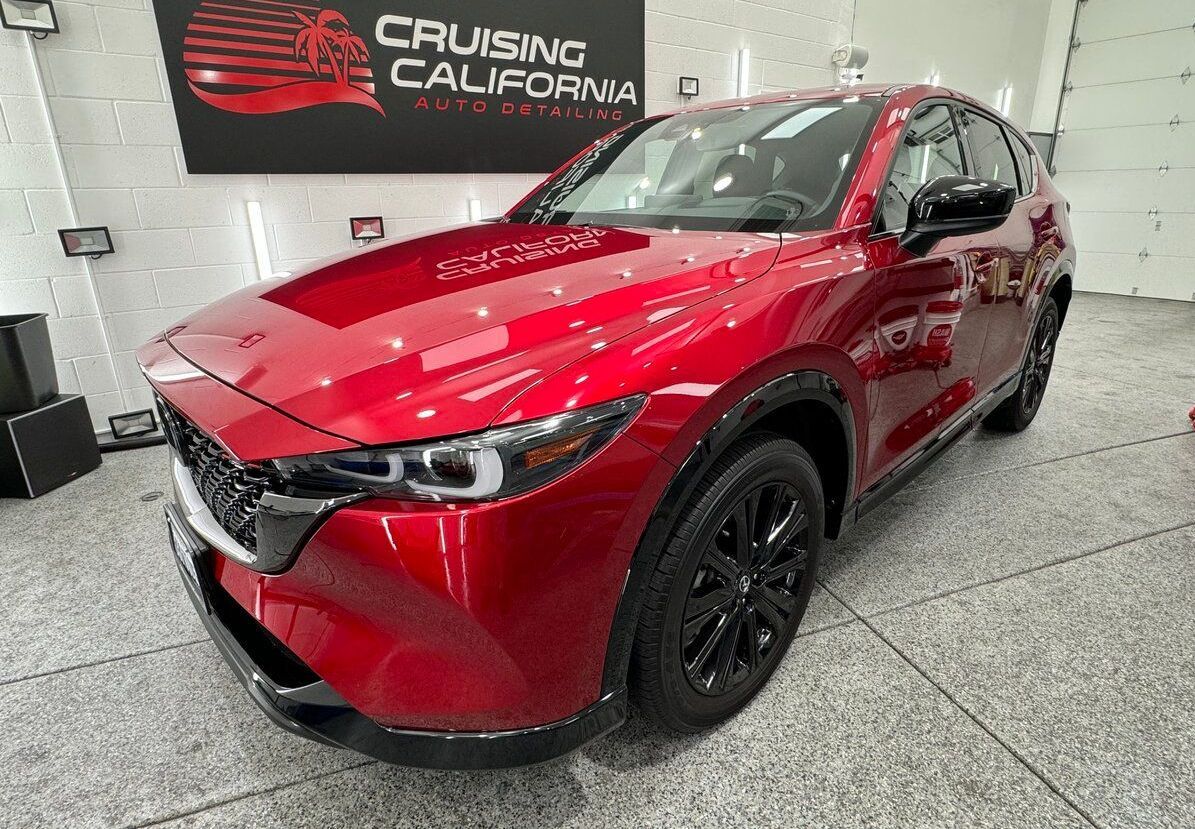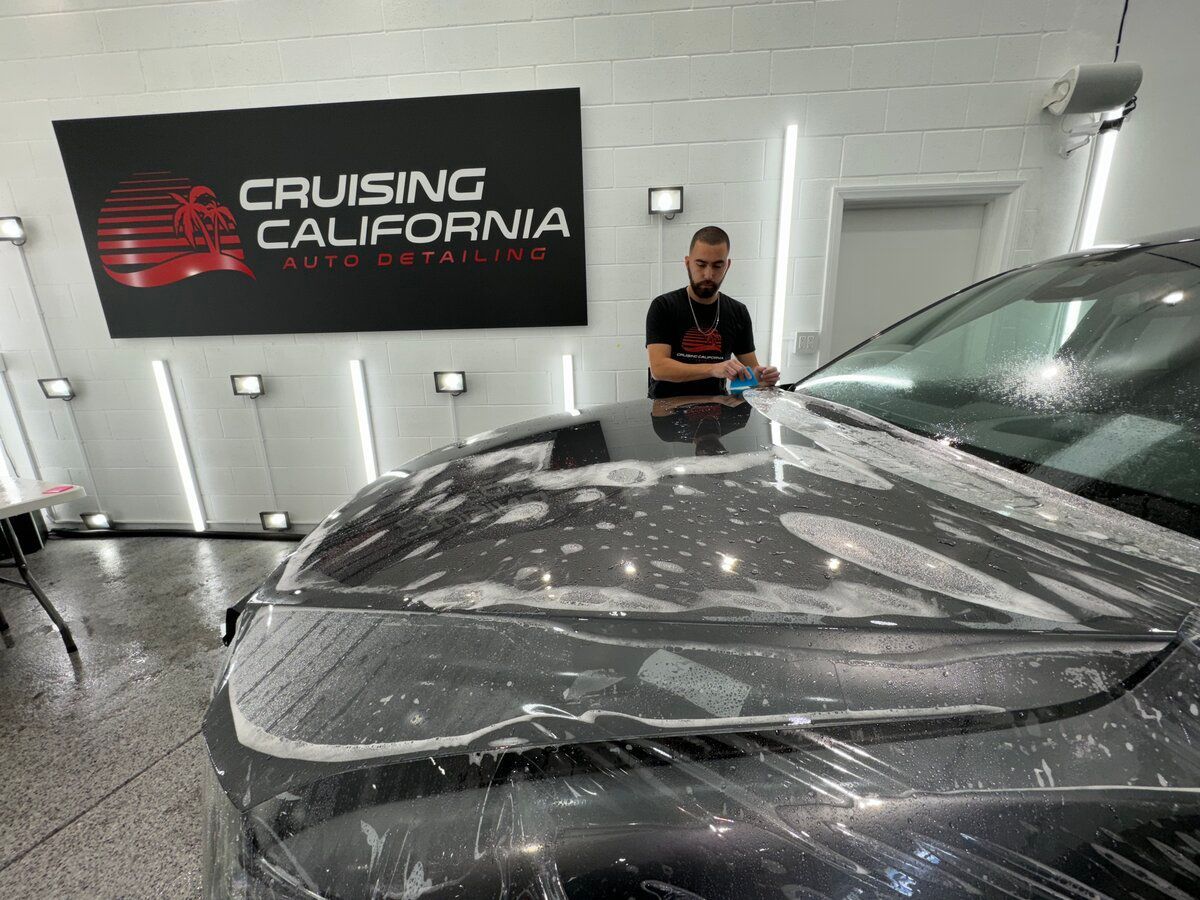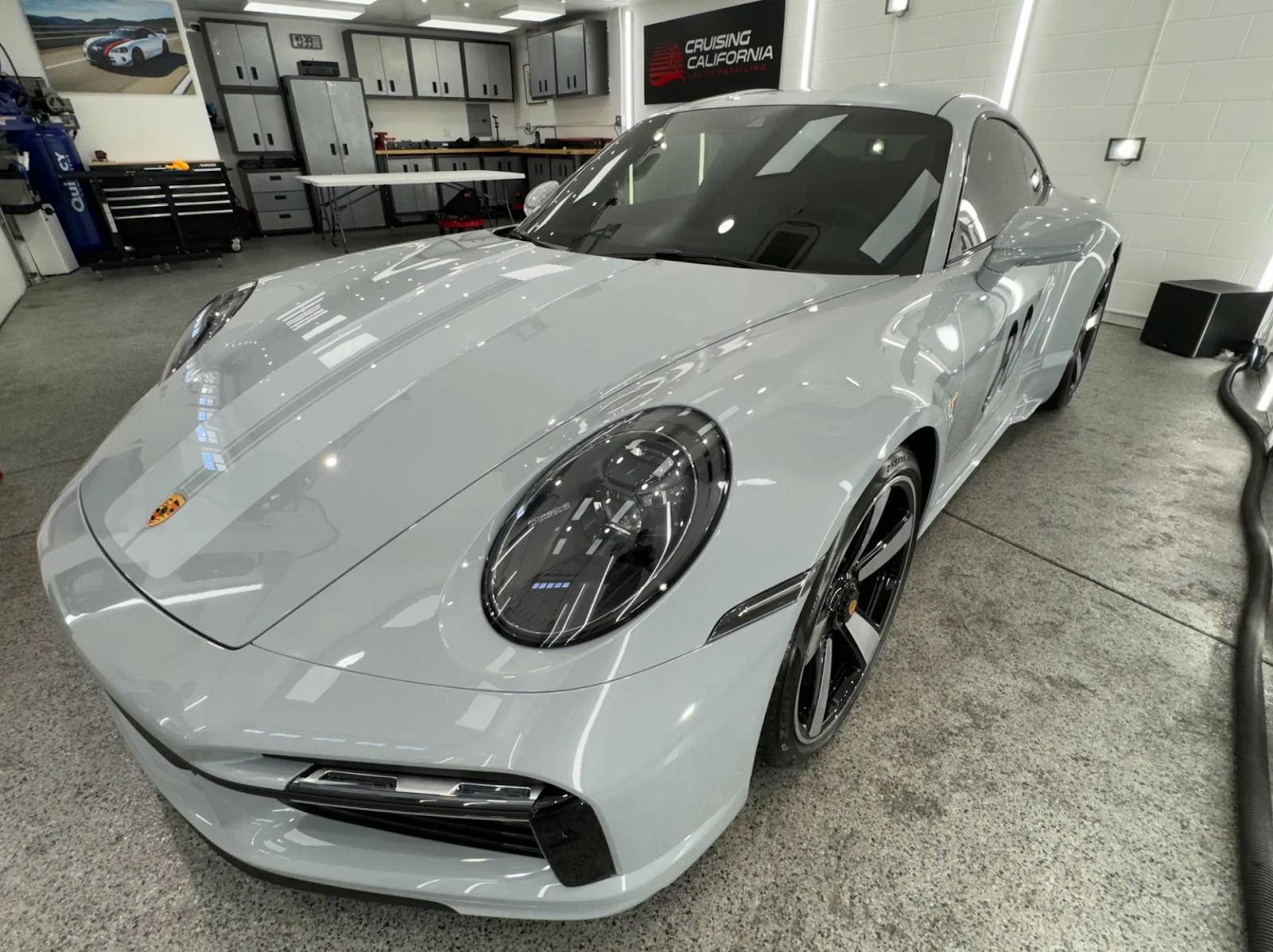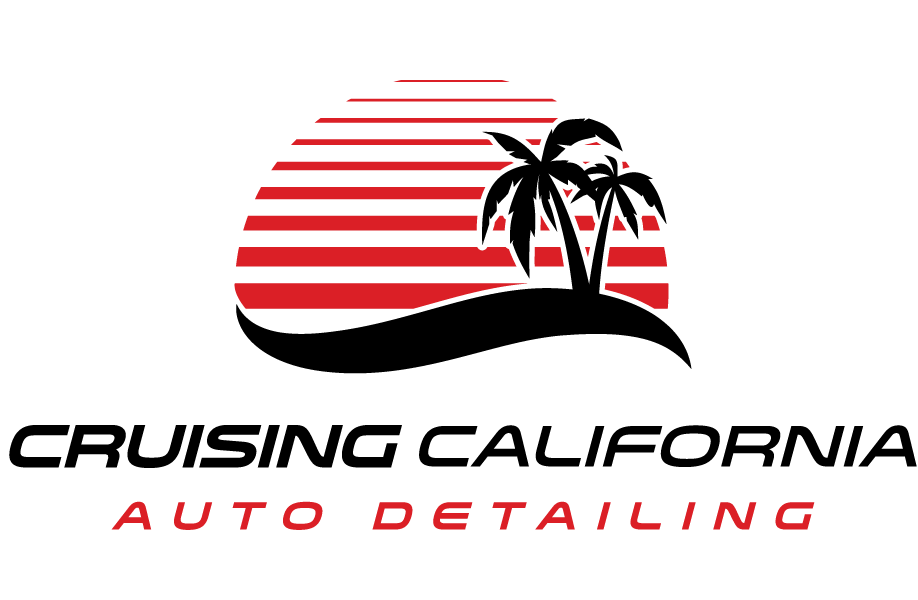Choosing the Right PPF Thickness for Optimal Paint Protection: A Comprehensive Guide
Every car enthusiast knows that protecting your vehicle goes beyond regular washes and waxes. Selecting the right paint protection film thickness plays a crucial role in shielding your car from those pesky daily road hazards like rocks, minor scratches, and debris.
To choose the right PPF thickness, consider your driving conditions and vehicle type; thicker films, typically 8 to 10 mils, offer superior protection against scratches and chips in harsh environments, while thinner films around 6 mils may suffice for standard use. Additionally, consult with a professional installer to assess factors like aesthetics and longevity to ensure an optimal choice tailored to your needs.
Understanding Paint Protection Film (PPF)
A paint protection film, or PPF for short, is much more than just a clear layer over your vehicle’s paint; it's an advanced shield against the hazards of the road. Typically crafted from thermoplastic urethane, this film absorbs impacts and resists damage from scratches, chips, and other minor imperfections. Its unique formulation allows it to adhere seamlessly to the painted surface while maintaining its clarity over time. This ensures that while your car looks pristine, the underlying protection remains steadfast.
As consumers became increasingly aware of the importance of maintaining their vehicles, PPF evolved into a popular solution for automotive paint protection. Today, paint protection films come with various features tailored to different environmental challenges. For instance, some formulations offer self-healing properties that allow minor scratches to disappear over time when exposed to heat, adding assurance for car owners navigating urban environments or areas prone to debris. Other versions incorporate UV resistance to prevent paint from fading due to sun exposure. Understanding these details equips potential buyers with critical insights into which type of PPF aligns best with their driving conditions and lifestyle.
Moreover, the application process has seen significant advancements as well. Professional installation is often recommended to ensure optimal results; a proper application can enhance the longevity of the film while providing an invisible barrier that remains unobtrusive. From choosing the right installer to discussing specific needs related to driving habits or geographical factors, paving the way for effective communication with service providers maximizes the benefits of paint protection film.
Types and Functions of PPF
Different types of paint protection film cater to varying needs, ensuring that vehicle owners can choose the right film based on their driving circumstances and aesthetic preferences. The composition of these films determines how well they protect against the environment, wear and tear, and other external factors.
Common Types
- Polyurethane (PU): This type of PPF is well-regarded for its high elasticity. Typically ranging from 8 to 12 mils in thickness, PU films provide excellent protection against scratches and chips. Their self-healing capabilities allow minor abrasions to disappear when exposed to heat, meaning your car can maintain that 'just-washed' look longer.
- Thermoplastic PolyOlefin (TPO): Usually measuring 4–8 mils thick, TPO films offer a decent level of protection without being overly thick. They are suitable for vehicles regularly driven in more controlled conditions, making them an attractive option for daily drivers who face light road debris but don't frequent harsher environments.
Functions
When we consider the functions of each PPF type, their unique characteristics shine through more clearly.
- Polyurethane (PU): Polyurethane films stand out not only due to their self-healing properties but also for their overall durability under various conditions. If you encounter a fluke incident—like your shopping cart grazing your car—the PU film bends without breaking, protecting the original paint underneath.
- Thermoplastic PolyOlefin (TPO): TPO films provide a balanced approach. While they lack the advanced self-healing technology of PU films, they still offer solid protection for everyday driving situations where potential hazards are mild. This makes them ideal for anyone who wants good guardrails against basic wear without investing in full-blown heavy-duty coverage.
With the various types and functions explored, it’s essential now to learn how to accurately assess these protective layers to ensure you're getting precisely what you need.
Measuring PPF Thickness
Accurate measurement of paint protection film thickness is a vital step towards guaranteeing the desired level of defense for your vehicle against scratches, chips, and other damage. When measuring, it’s important to note that PPF is typically specified in mils, where one mil equals one-thousandth of an inch. This precision is not just a number; it's a promise of safety for your car's exterior.
- Tools for Measurement: For this task, specialized tools like a micrometer or a digital caliper are generally the preferred choices. These instruments help provide precise measurements that ensure you know exactly what thickness you're working with. Many professionals recommend using a digital caliper because it allows for easy reading and can be calibrated frequently. It’s crucial to take measurements from multiple spots on the film. Doing this can help identify any inconsistencies in thickness, which could signify a problem during installation or point to potential manufacturing defects. If you find significant variations in readings, don't ignore them; they might indicate underlying issues that require attention.
- Importance of Accurate Measurements: The significance of properly gauging the thickness cannot be overstated. If the PPF isn't thick enough, it may lack the durability required to withstand environmental impacts effectively. In contrast, excessive thickness could alter the aesthetic appeal of your vehicle or add unnecessary weight that might affect performance. By ensuring the film adheres to the specified thickness parameters provided by manufacturers, you're supporting its intended functionality and longevity. Therefore, always cross-check measurements against those listed in manufacturer specifications. Not only does this practice reinforce your investment in quality protection, but it also enhances your peace of mind knowing you've made an informed choice about the protective mechanisms surrounding your car's finish.
Benefits of Different Thickness Levels
The thickness of the paint protection film plays a crucial role not only in how well it protects your vehicle but also in how it enhances or detracts from its overall appearance. Let’s explore these thickness variations and what they mean for your car’s long-term care.
Thick vs. Thin Films
Choosing a thicker film, typically around 10 mils, offers superior protection against environmental factors like gravel, road debris, and even minor impacts from branches. If you drive frequently on rough terrain or are concerned about chips and scratches, this extra layer provides peace of mind. On the downside, thicker films may be more noticeable on your vehicle's surface, which might compromise the sleek look you desire. Additionally, due to their rigidity, they can require more expertise to apply correctly; improper fitting might lead to unsightly bubbles or lifting at the edges.
Conversely, thinner films around 4-6 mils tend to blend seamlessly with the car's finish. They’re less visible and can be easier to install, even in tight spaces. However, they offer limited protection, making them more suitable for vehicles that are primarily used in mild driving conditions—such as city commuting. It’s a balance between aesthetics and protection.
Durability and Longevity
In terms of longevity, investing in thicker PPF is statistically justified; thicker films usually last between 7 and 10 years, while the thinner counterparts often require replacement around the 5-year mark. This difference means that while you might pay more upfront for thick film installation, you're essentially saving money over time by reducing the frequency of replacements. When calculating this into your budget, consider not just the product cost but also installation fees and potential paint damage repairs if thin films fail to protect adequately.
Beyond initial costs, maintenance plays a significant role in determining longevity. Thicker films can often withstand harsher cleaning methods without damage compared to their thinner counterparts, making them a better choice if you frequently wash your vehicle or expose it to chemicals during detailing.
Key Considerations for Choosing Thickness
When selecting the right paint protection film (PPF) thickness, it's crucial to keep in mind the specific conditions your vehicle will face.
- Usage Environment: One primary factor is the usage environment. For instance, if you often find yourself navigating rough terrains or driving through areas abundant with road debris, opting for thicker films, generally in the range of 8 to 10 mils, is advisable. These thicker films offer enhanced resistance against scratches and chips, fortifying your vehicle’s surface against the elements. Conversely, if you primarily drive in an urban setting where roads are well-maintained and the risks of damage are lower, thinner films ranging from 4 to 6 mils could meet your needs adequately while saving on cost.
- Vehicle Type and Value: High-performance and luxury vehicles naturally draw higher value due to their design and engineering excellence. To preserve this value over time, investing in thicker PPF becomes not only a wise choice but also a protective measure that maintains aesthetic integrity. However, when considering older or less expensive vehicles, it's important to weigh the cost-benefit ratio carefully. Thinner films may be more budget-friendly and still provide acceptable levels of protection without compromising too much on appearance.
- Professional Advice: Lastly, professional advice can be invaluable here. Individual driving habits, environmental factors like climate or geography, and additional enhancements such as self-healing properties found in certain thicker paint protection films should all play into your decision-making process. Consulting with experts can lead to tailored recommendations that align with your specific needs and ensure that you make an informed choice regarding PPF thickness.
By considering these vital elements, you'll be better positioned to make choices that enhance both the durability and attractiveness of your vehicle's finish as you prepare for what lies ahead.
Expert Recommendations for Different Needs
When it comes to paint protection films, there’s no one-size-fits-all solution. Experts in automotive protection emphasize that understanding your vehicle type and usage plays a crucial role in selecting the right PPF thickness.
For high-end sports cars, protecting their luxurious finish with thicker film makes sense. We recommend a 10 mil thick polyurethane film for such vehicles. This thickness excels in shielding your paint from rock chips, scratches, and UV damage. Not only does this type of film take the hits, but it also enhances aesthetic appeal while helping maintain resale value. Most consumer vehicles typically find 8 mil thickness adequate for regular usage. The 8-mil film collects fewer particles compared to thinner options and is less prone to wear. It provides robust defense against everyday hazards such as minor abrasions and environmental contaminants without breaking the bank.
Certain vehicle types face unique challenges that require specific PPF thicknesses. For instance, daily commuters benefit from a 6–8 mil PPF, which offers balanced protection suited for everyday situations while being budget-friendly. Conversely, off-road vehicles encounter rough terrain and greater impact damage; thus, a 10 mil film is recommended here to ensure durability against relentless elements. Ultimately, choosing the right PPF thickness aligns with expert advice and guarantees that your vehicle maintains its charm and functionality through every season and scenario it faces.
Leading PPF Installers in El Cajon, CA
When it comes to protecting your vehicle's paint in El Cajon, CCA Detailing & Ceramic Coating | PPF is the trusted choice for
expert paint protection film installation. Our experienced team ensures a seamless, nearly invisible application that shields your car from road debris, scratches, and environmental hazards. With precision and quality as top priorities, you can expect long-lasting protection that preserves the beauty of your vehicle. Choose CCA Detailing & Ceramic Coating | PPF to keep your investment looking pristine on every drive. Call us at (619) 916-6157 to get started!


